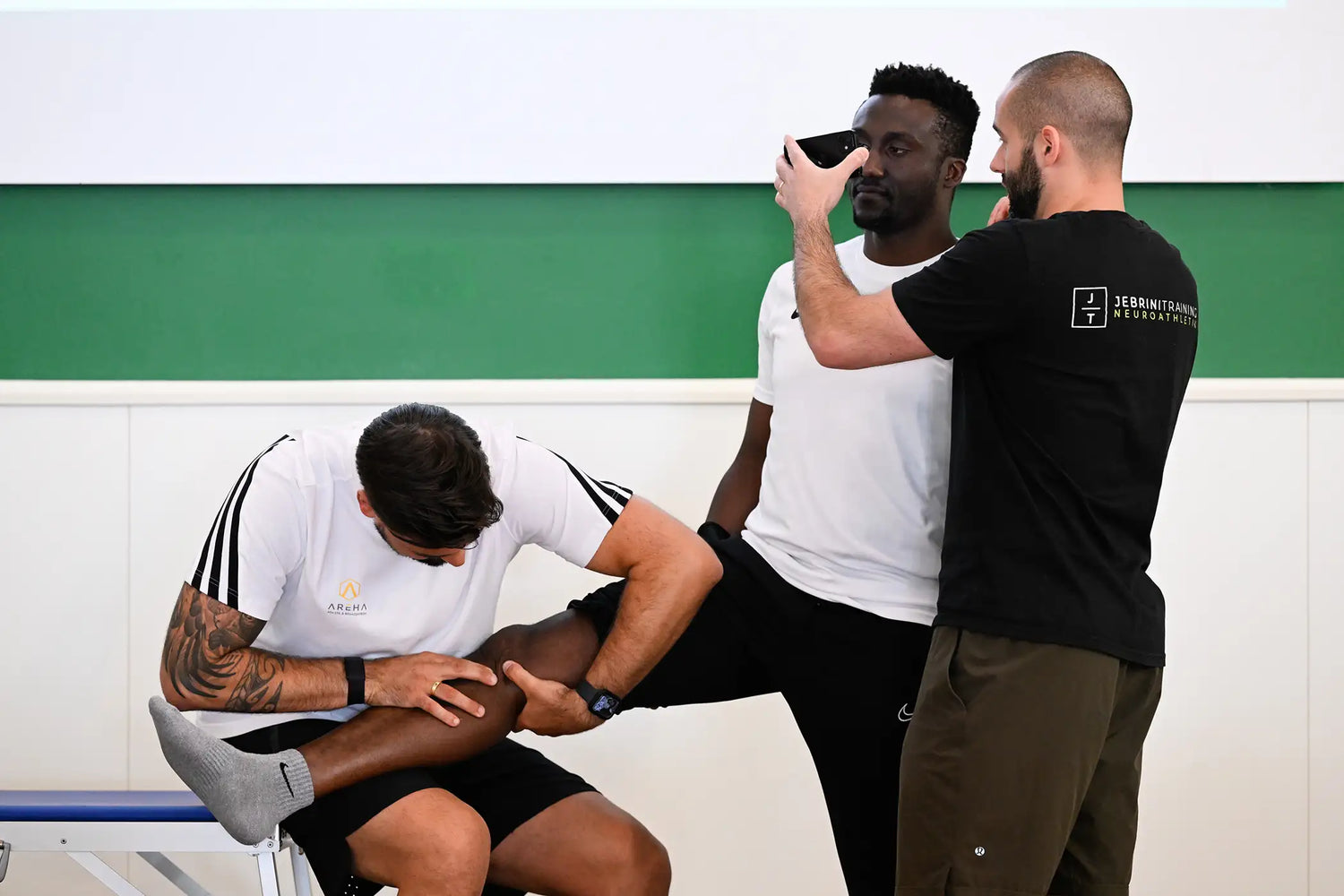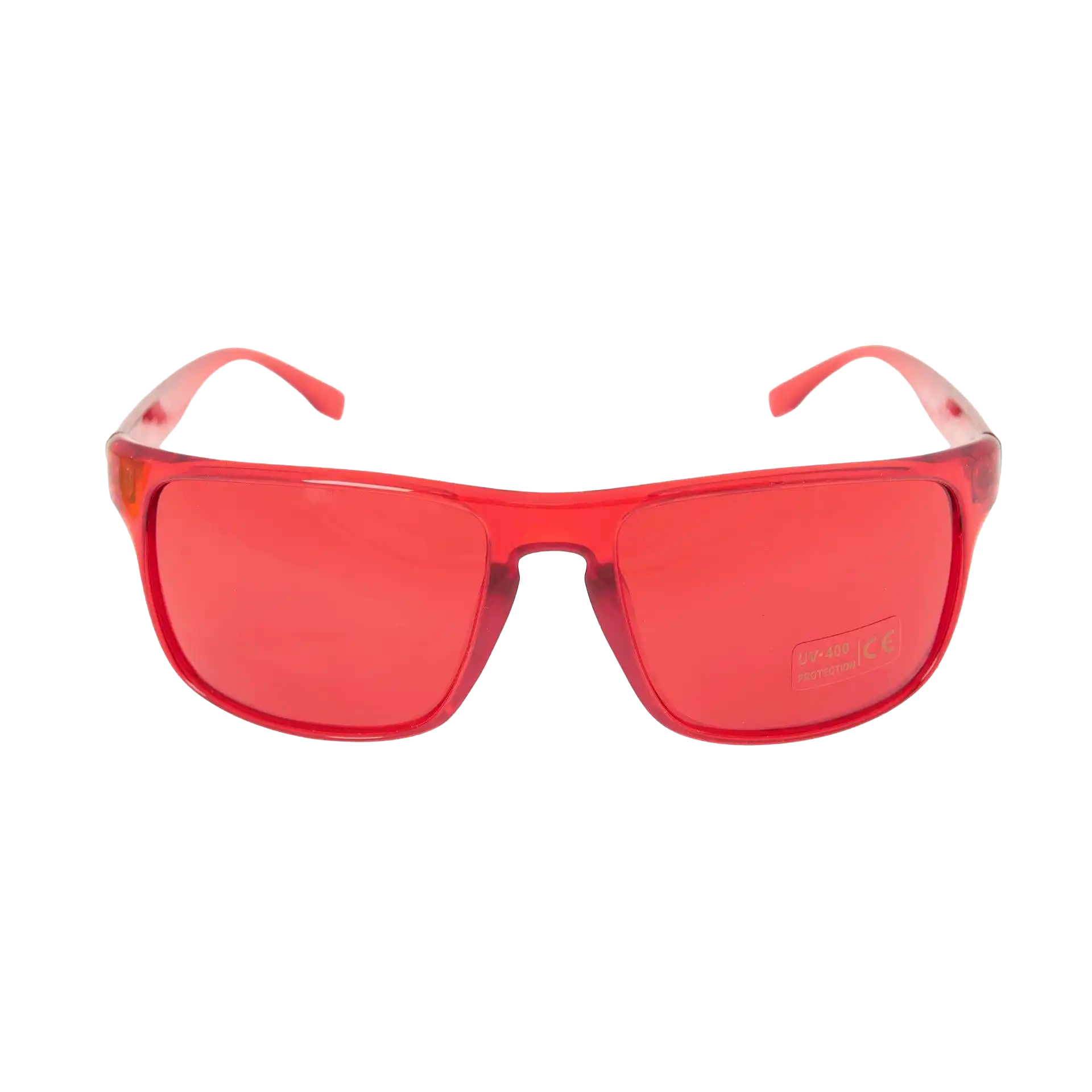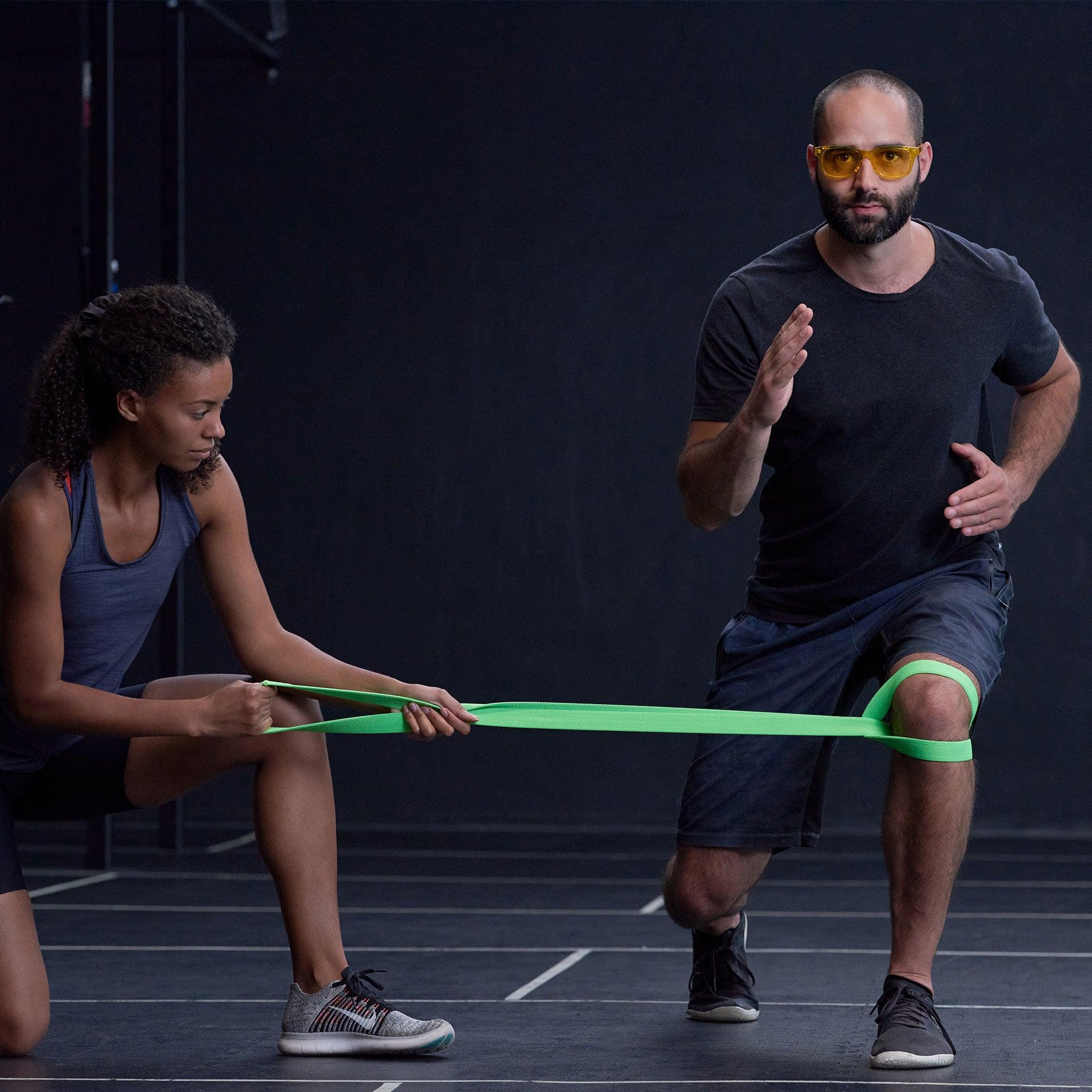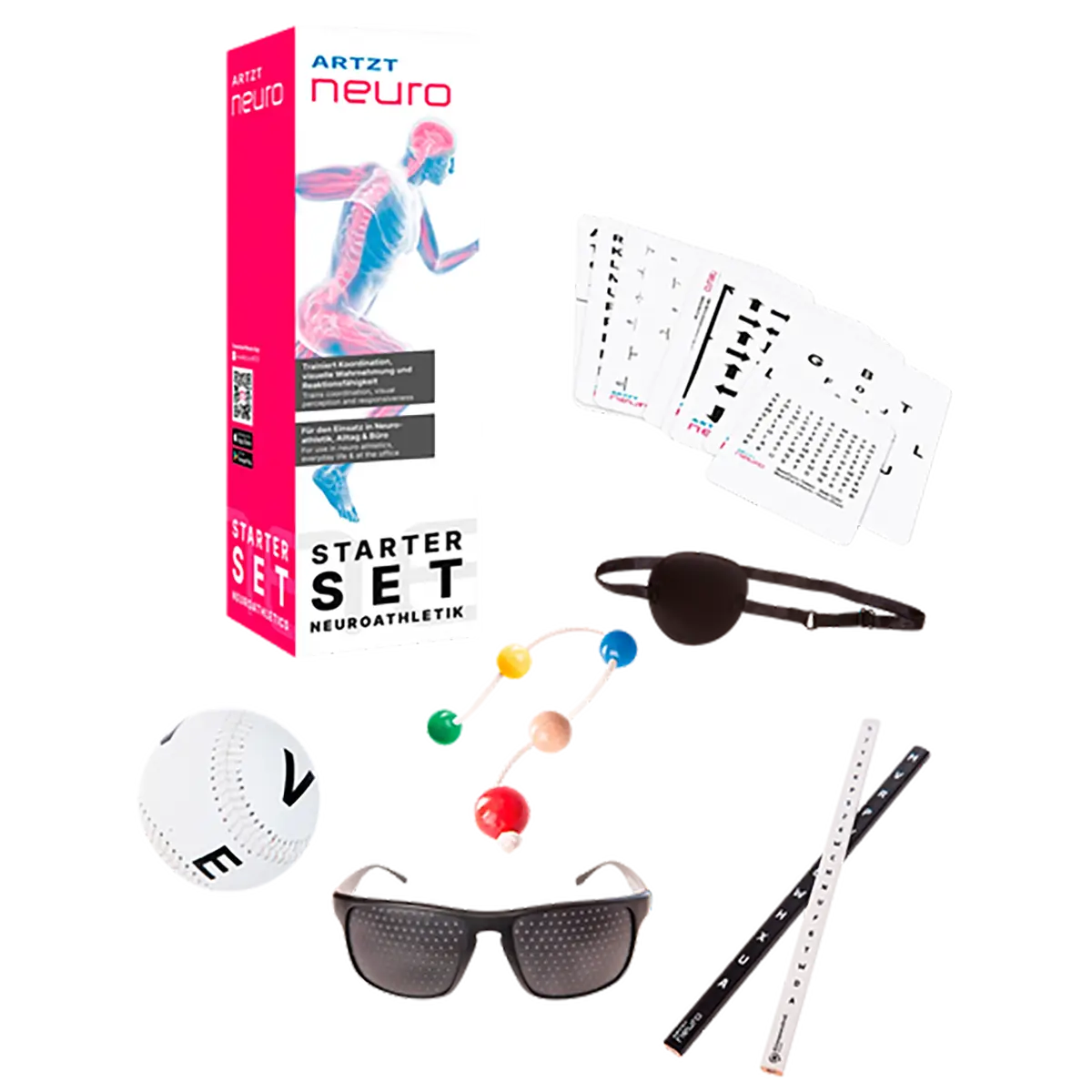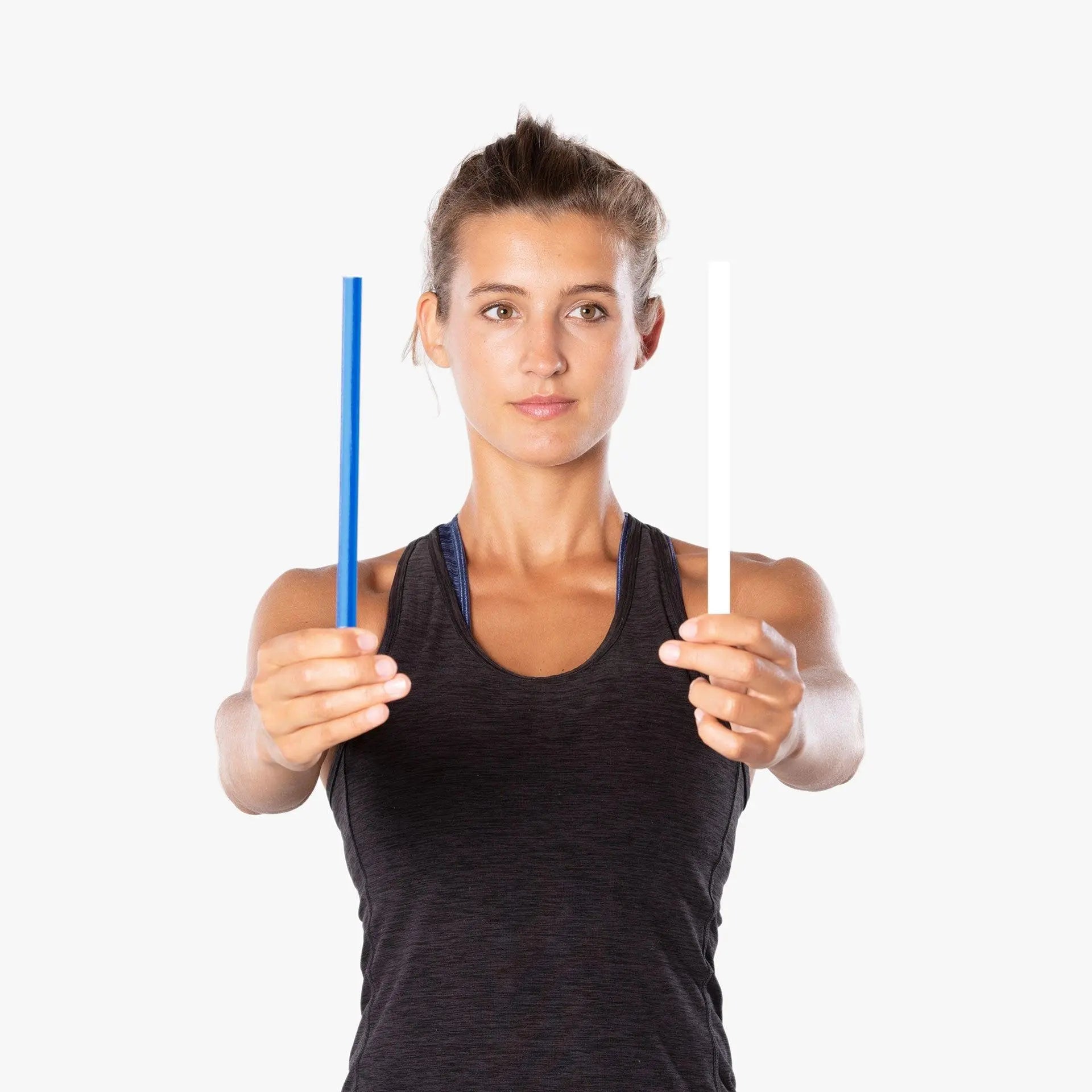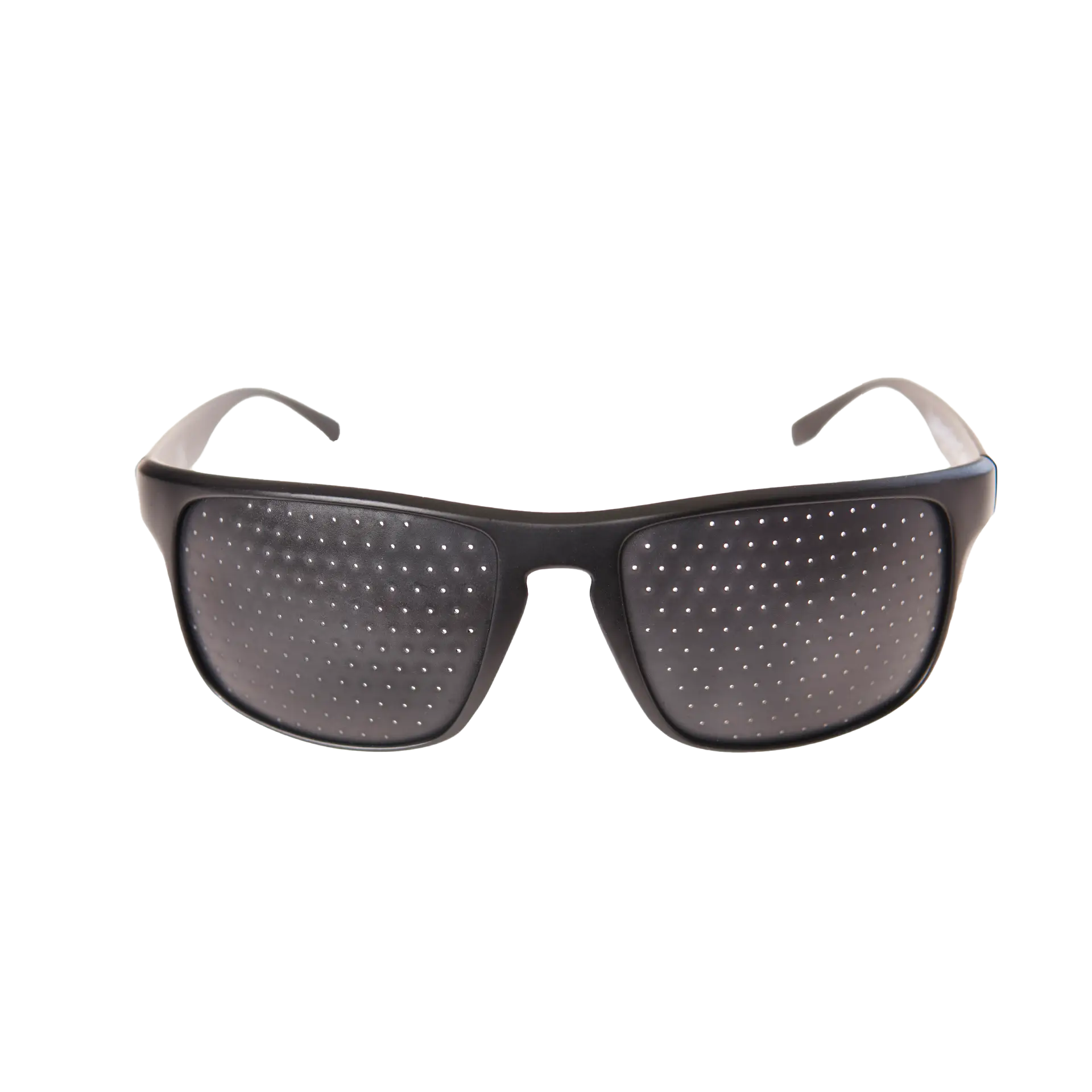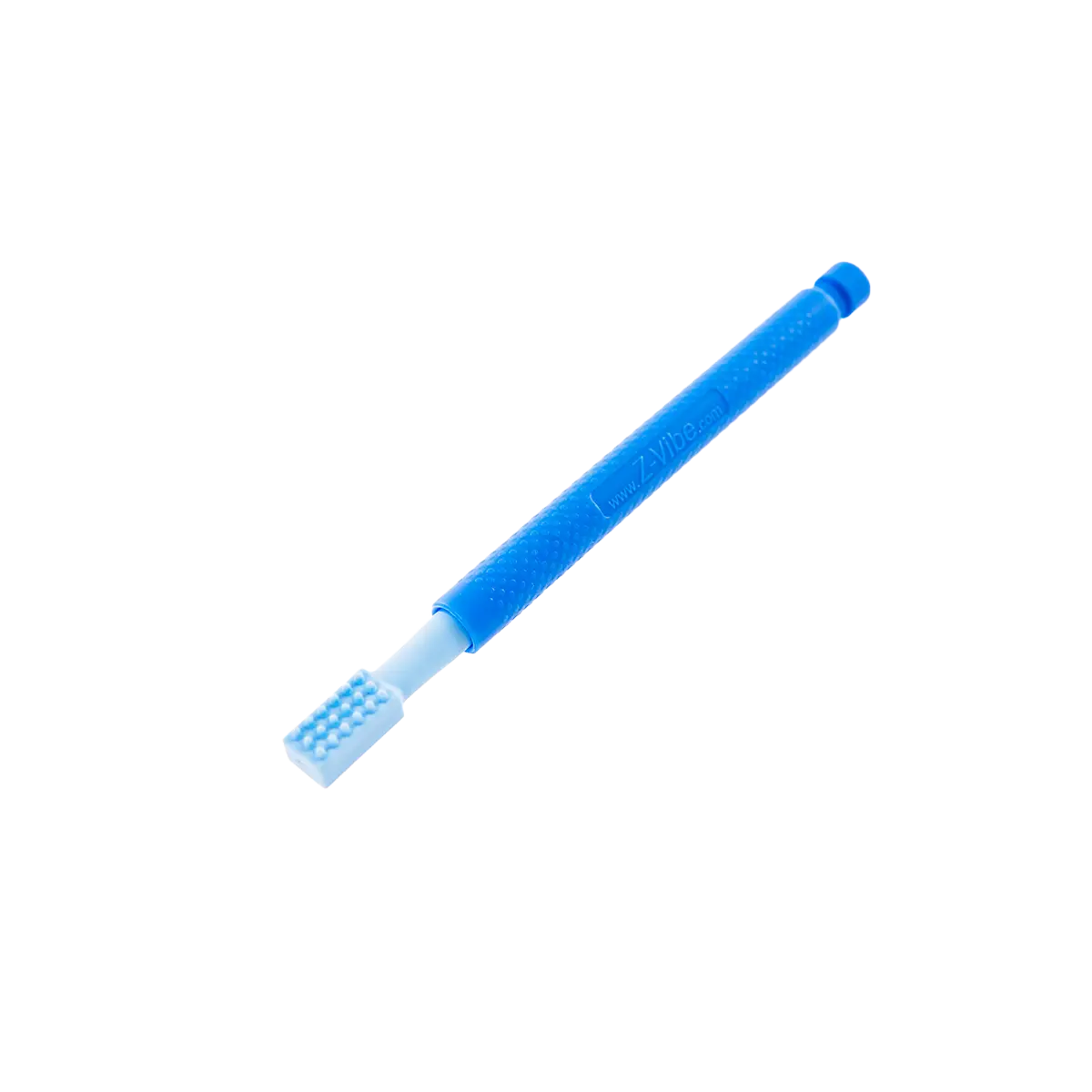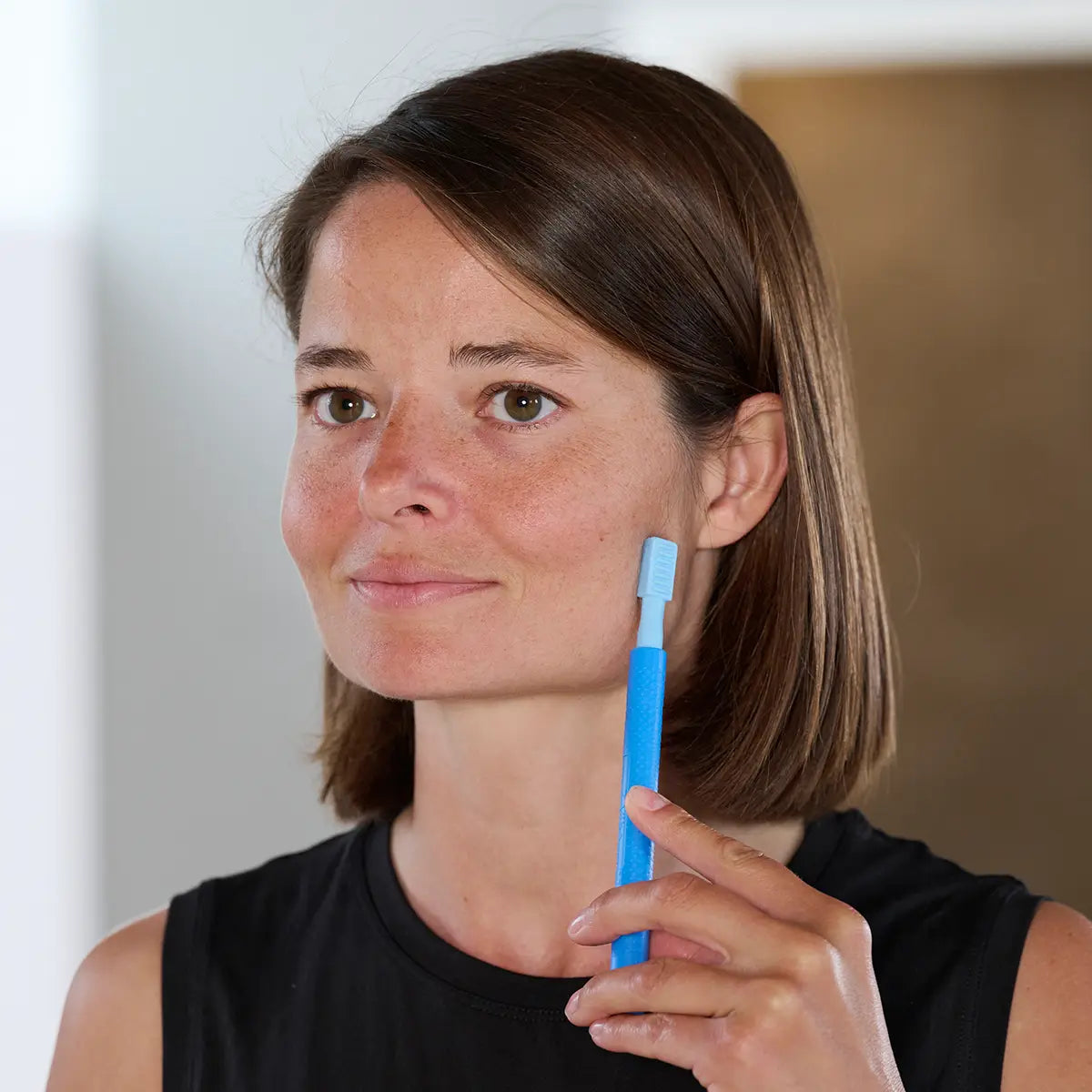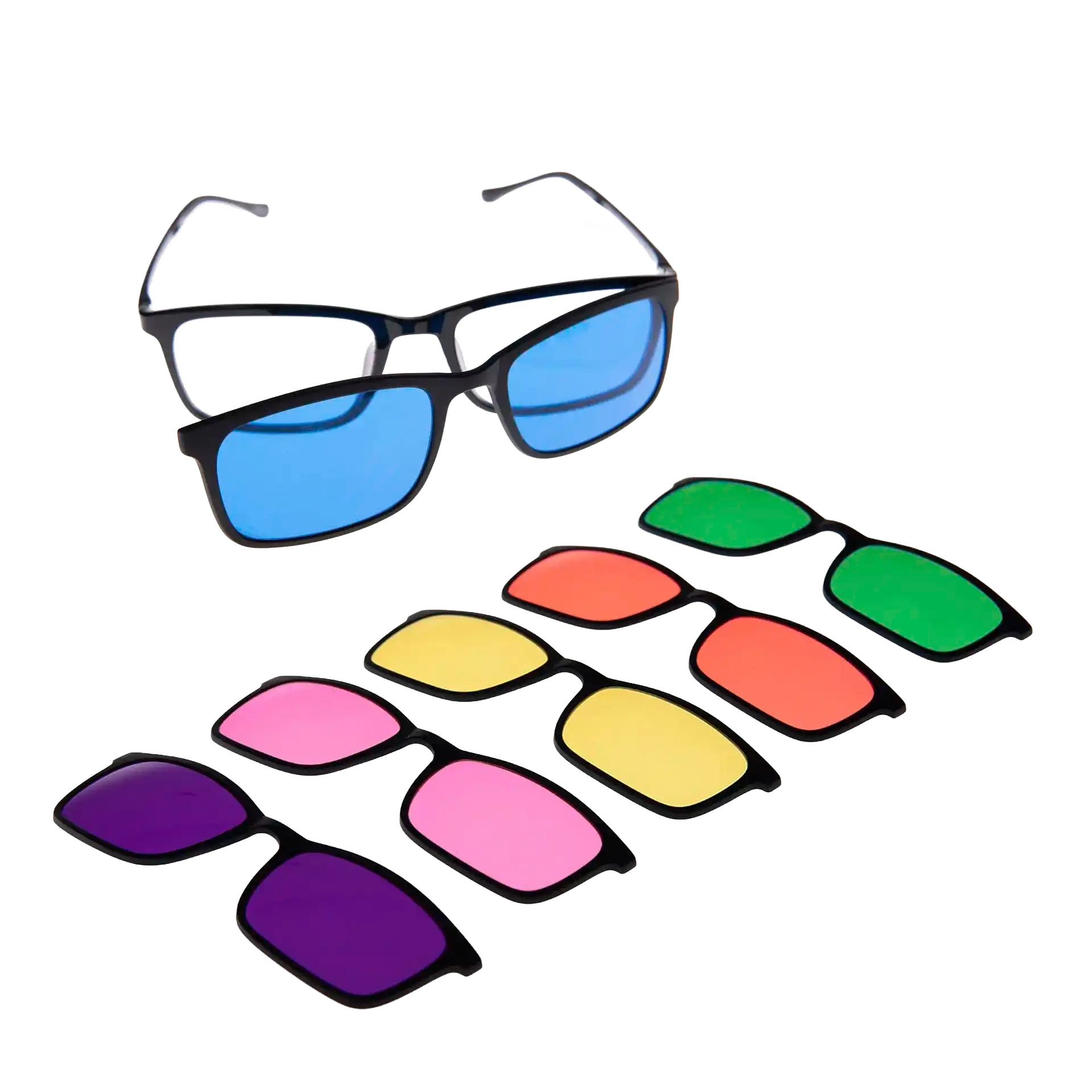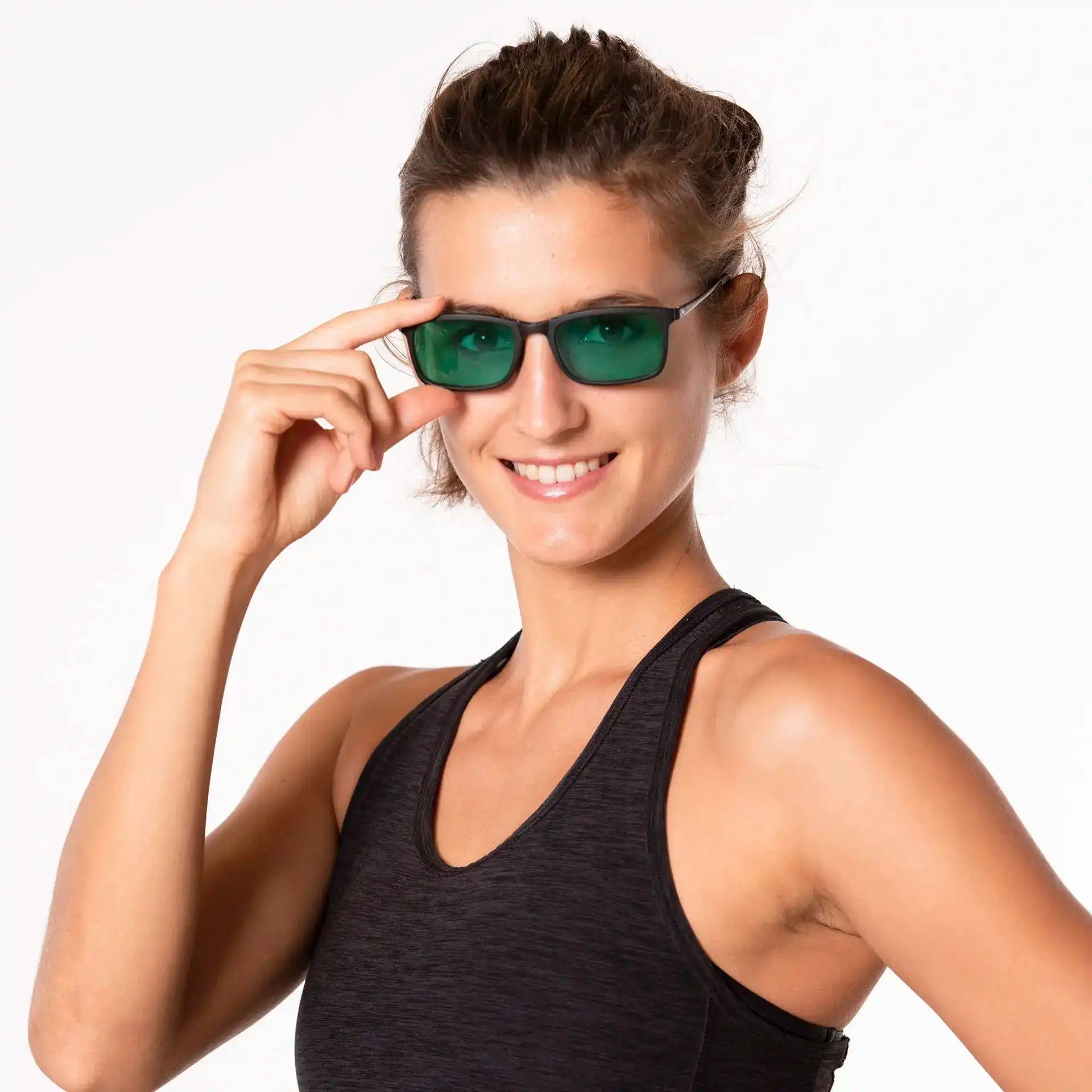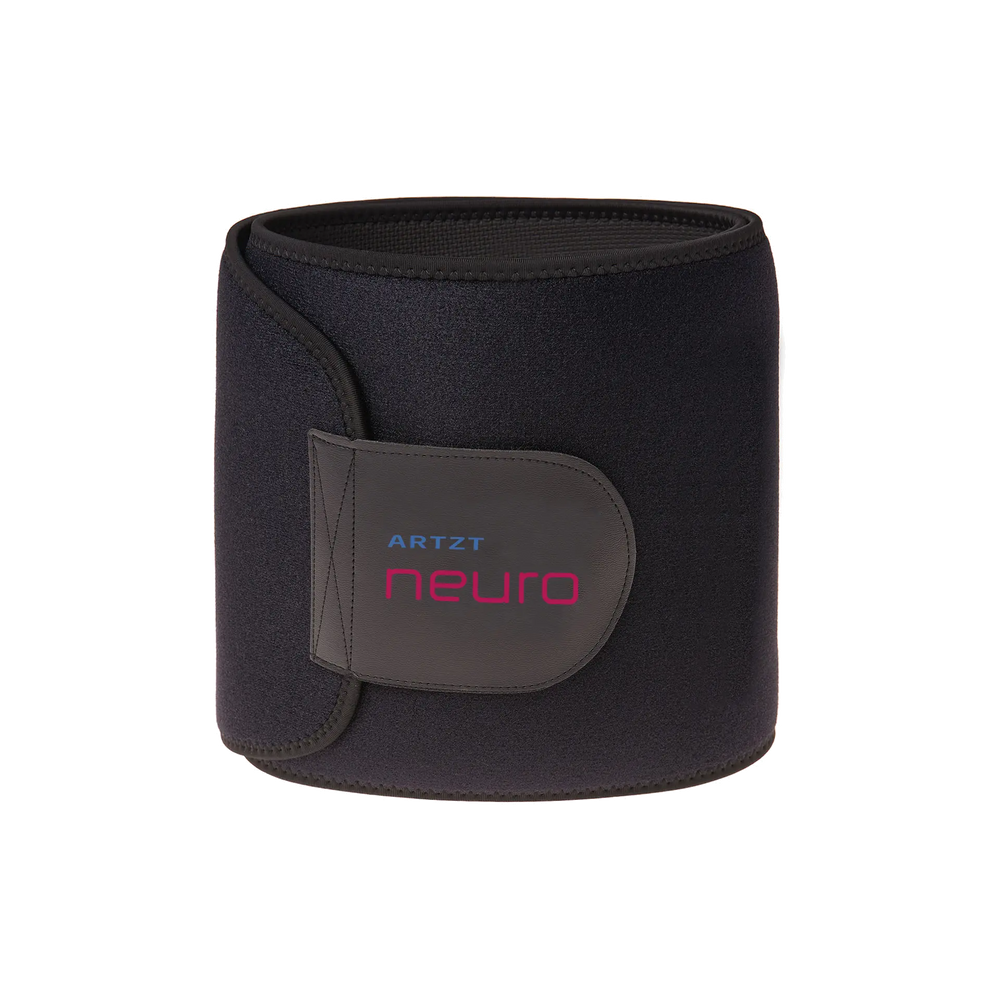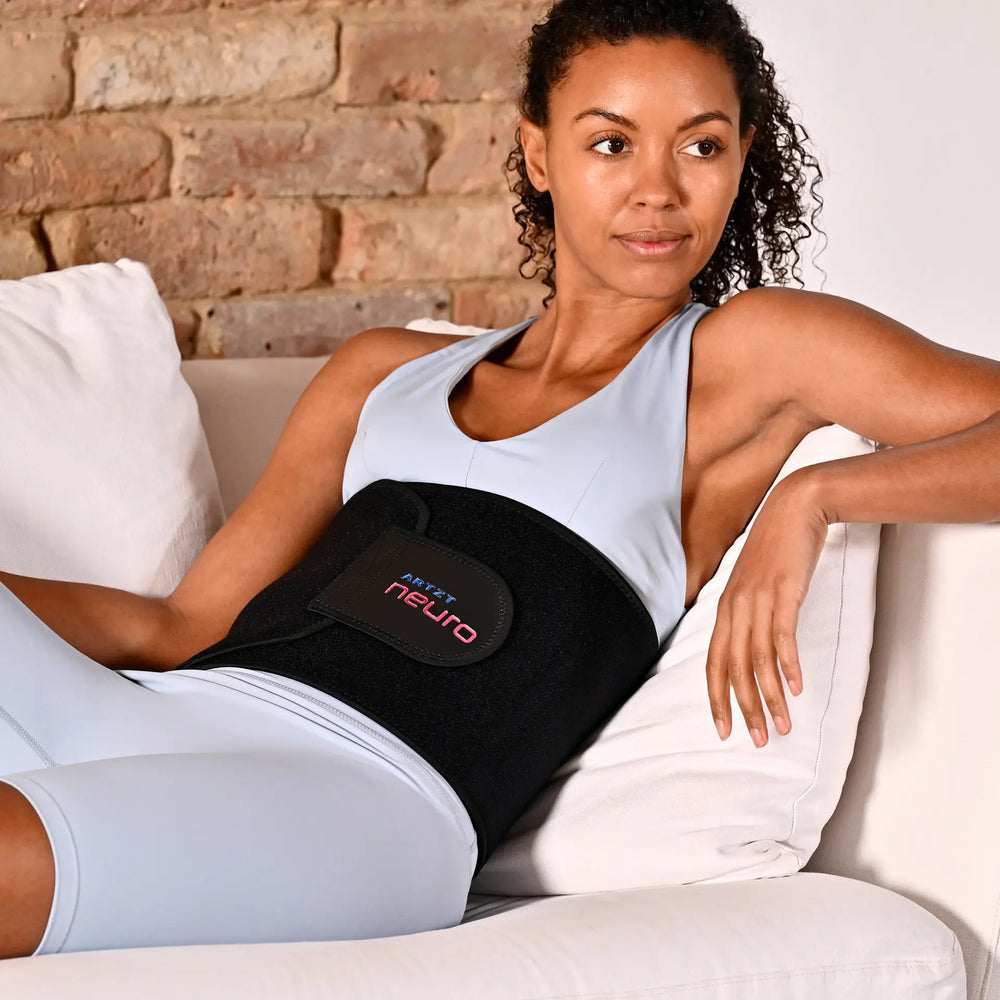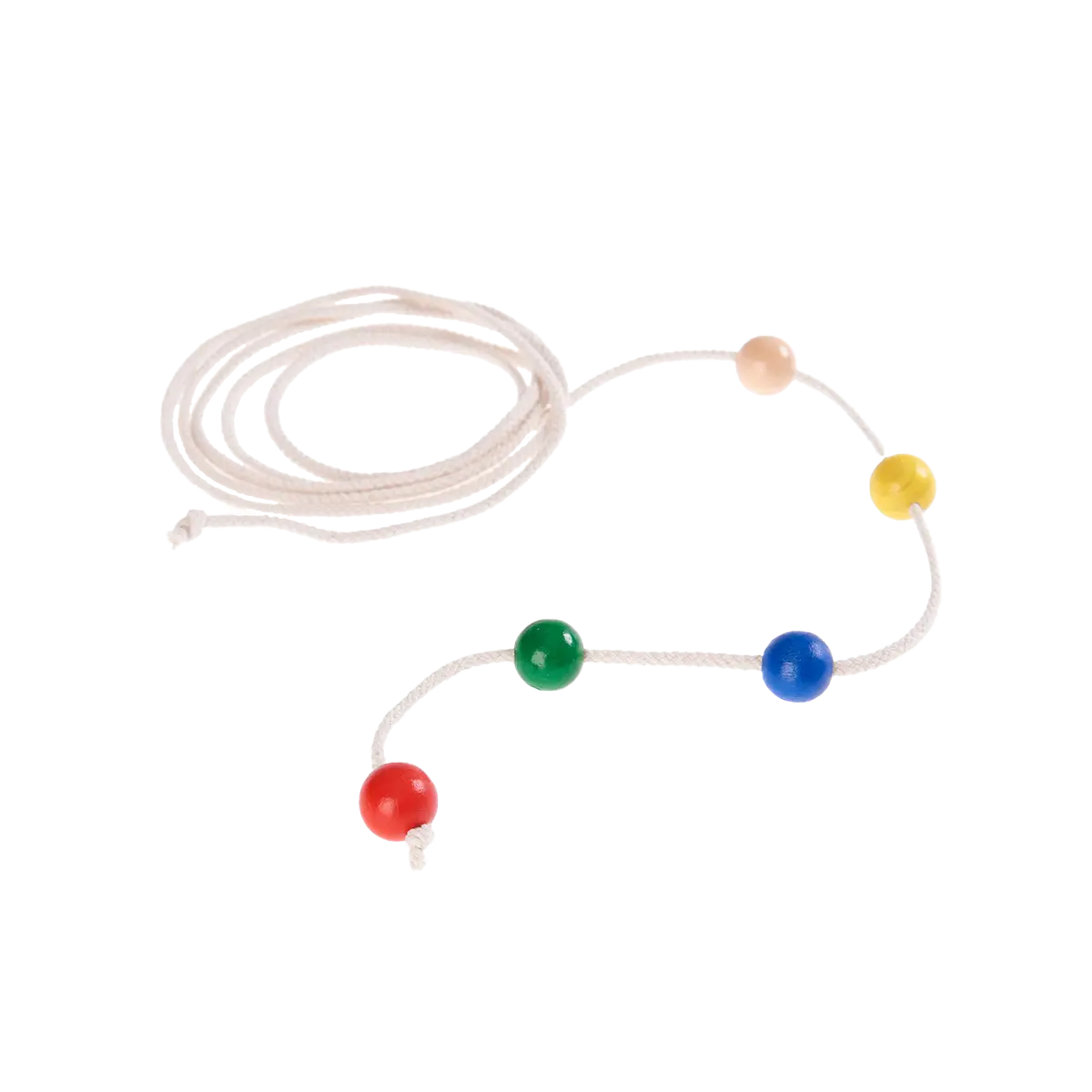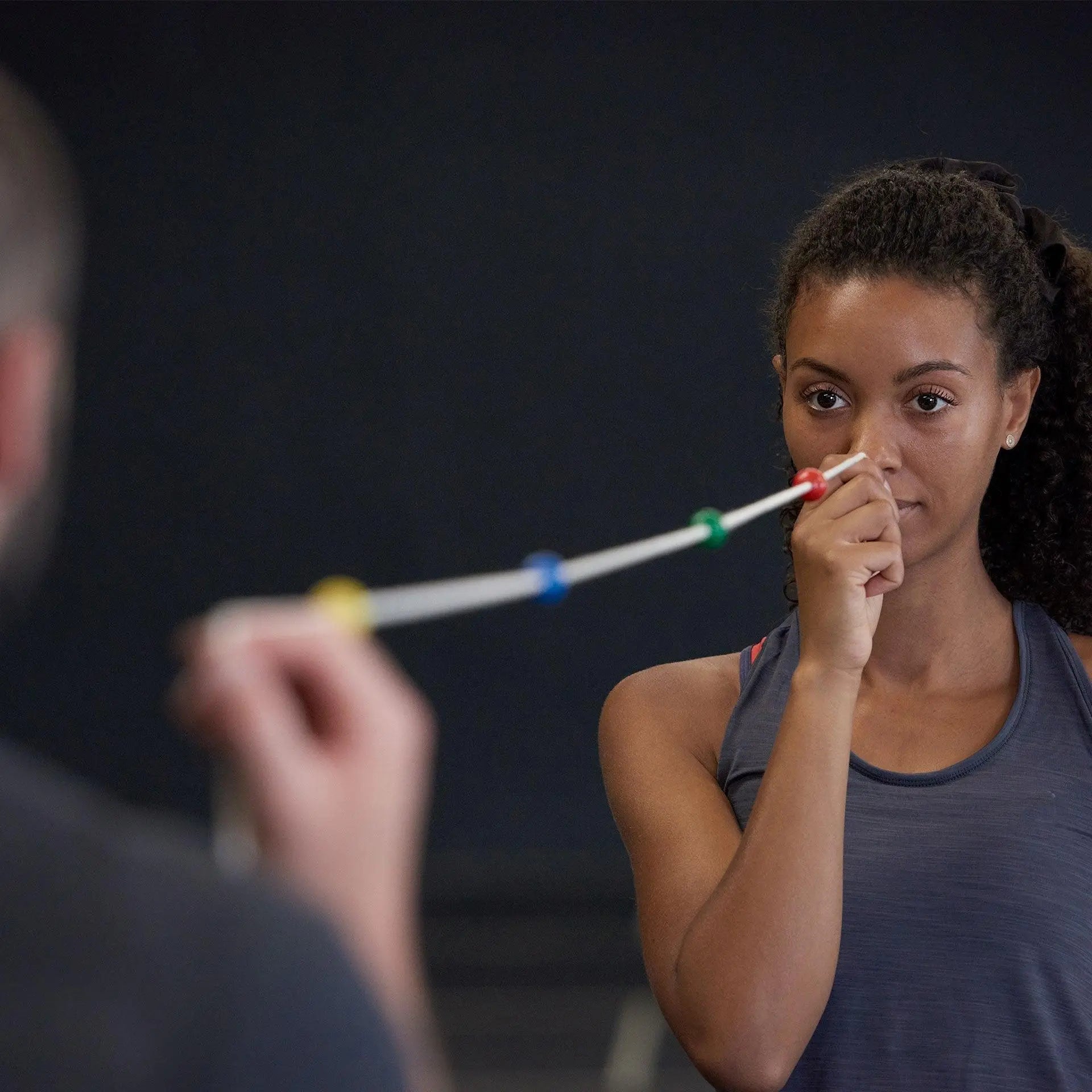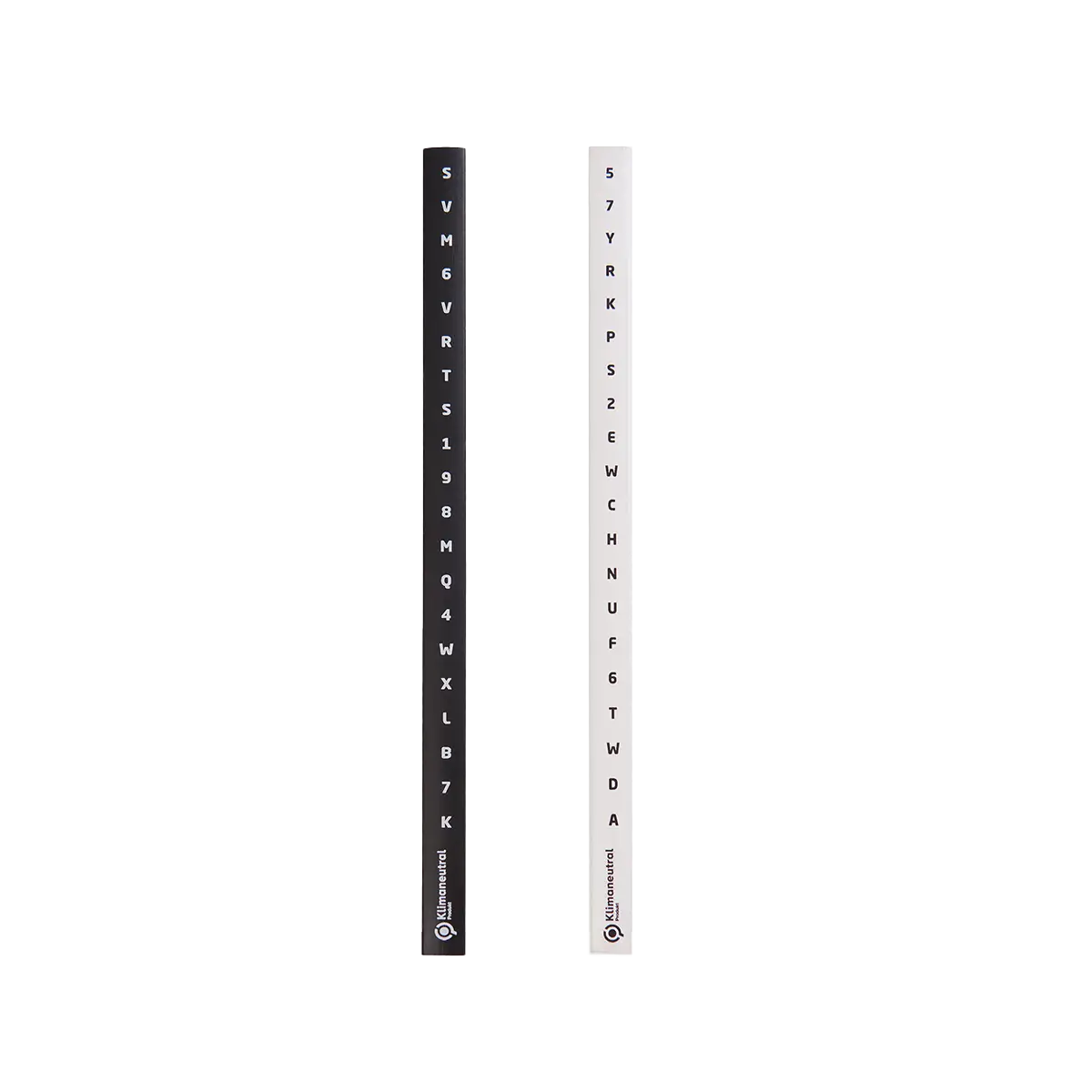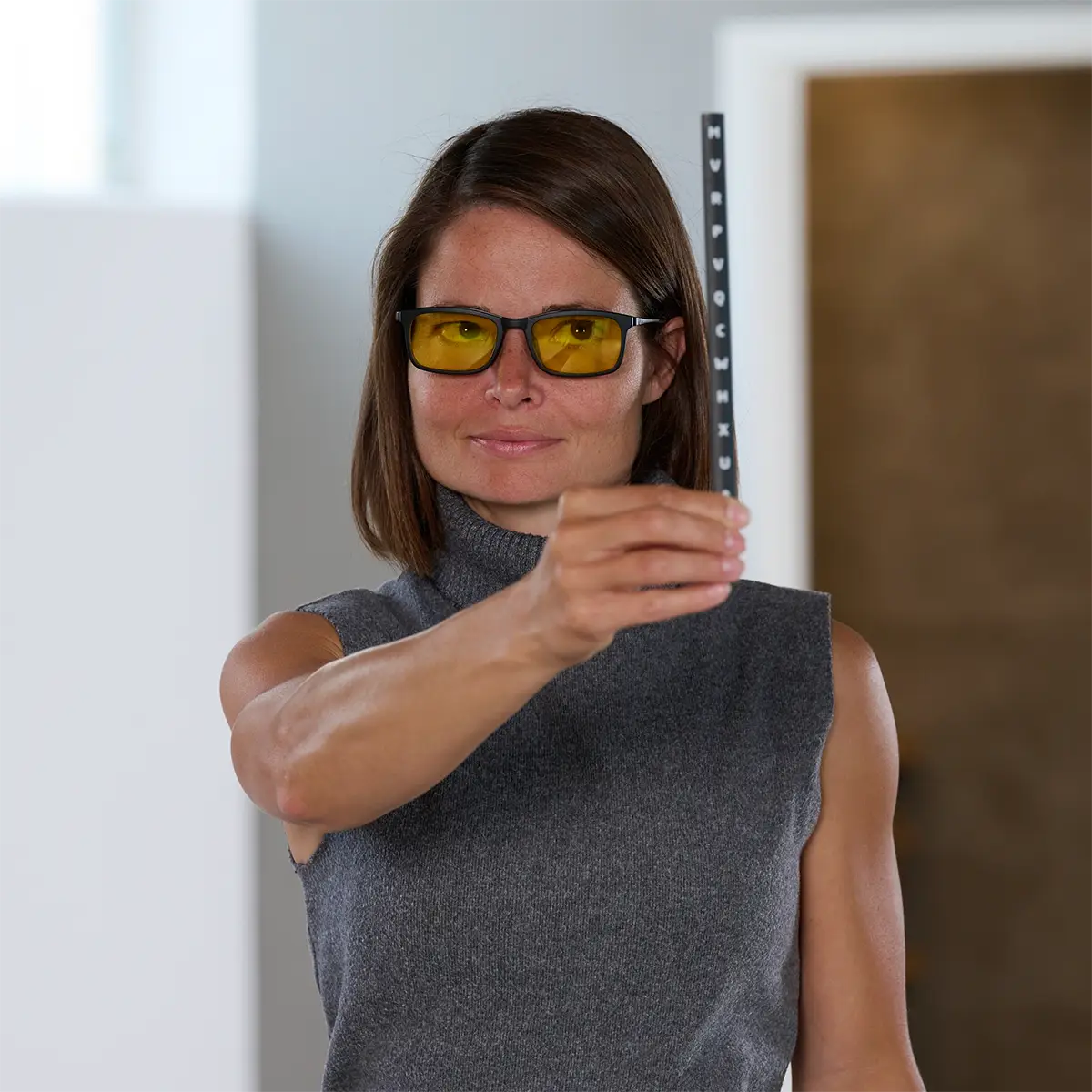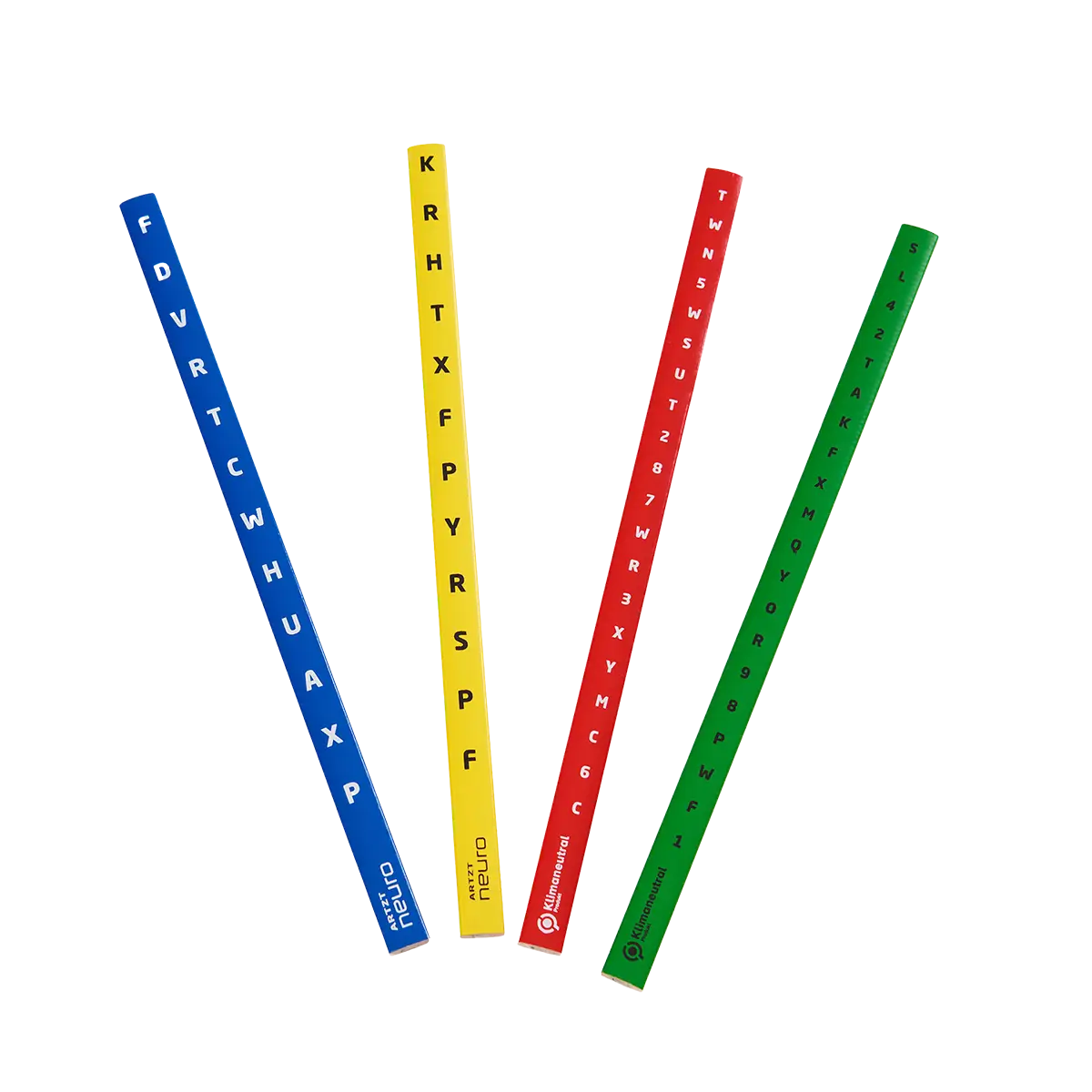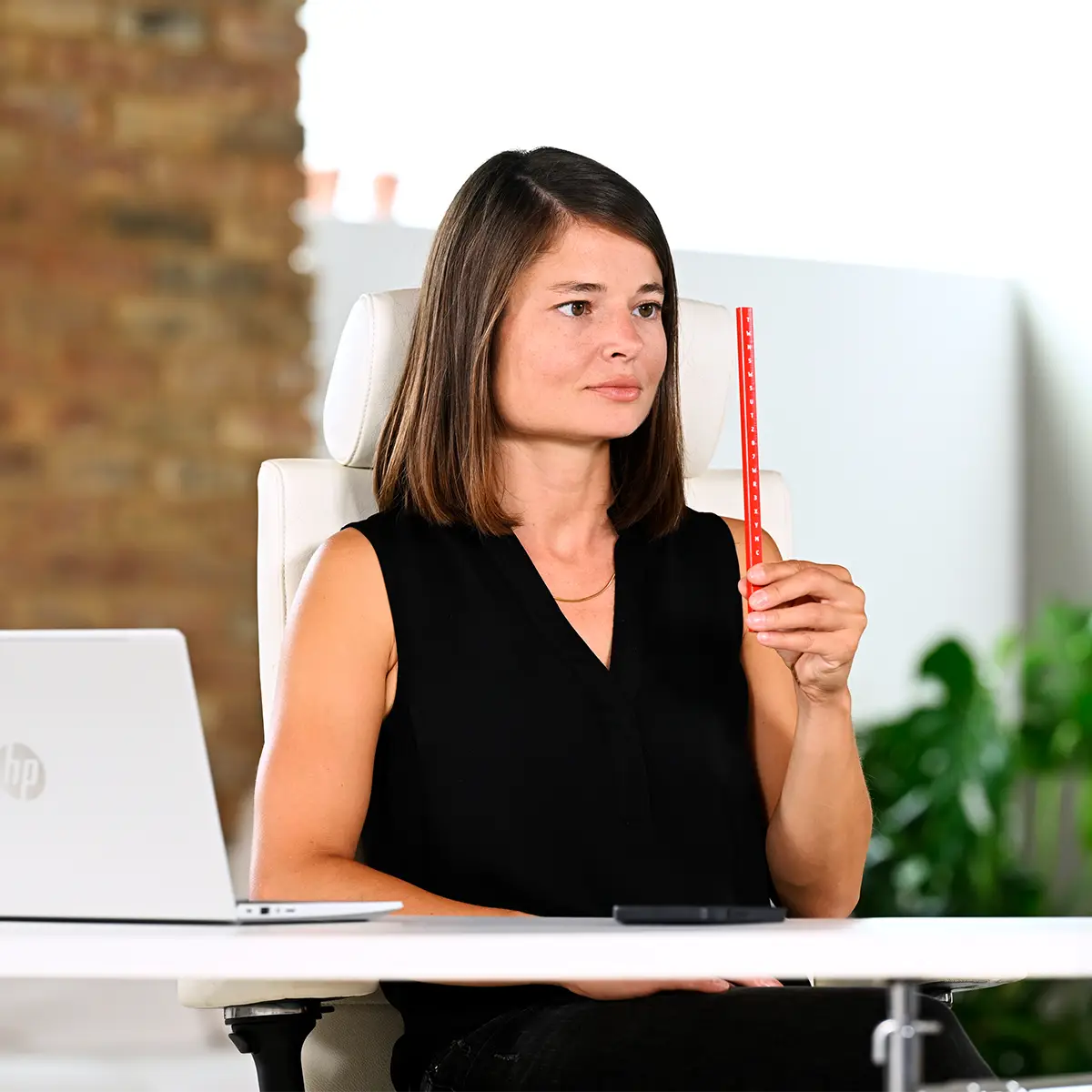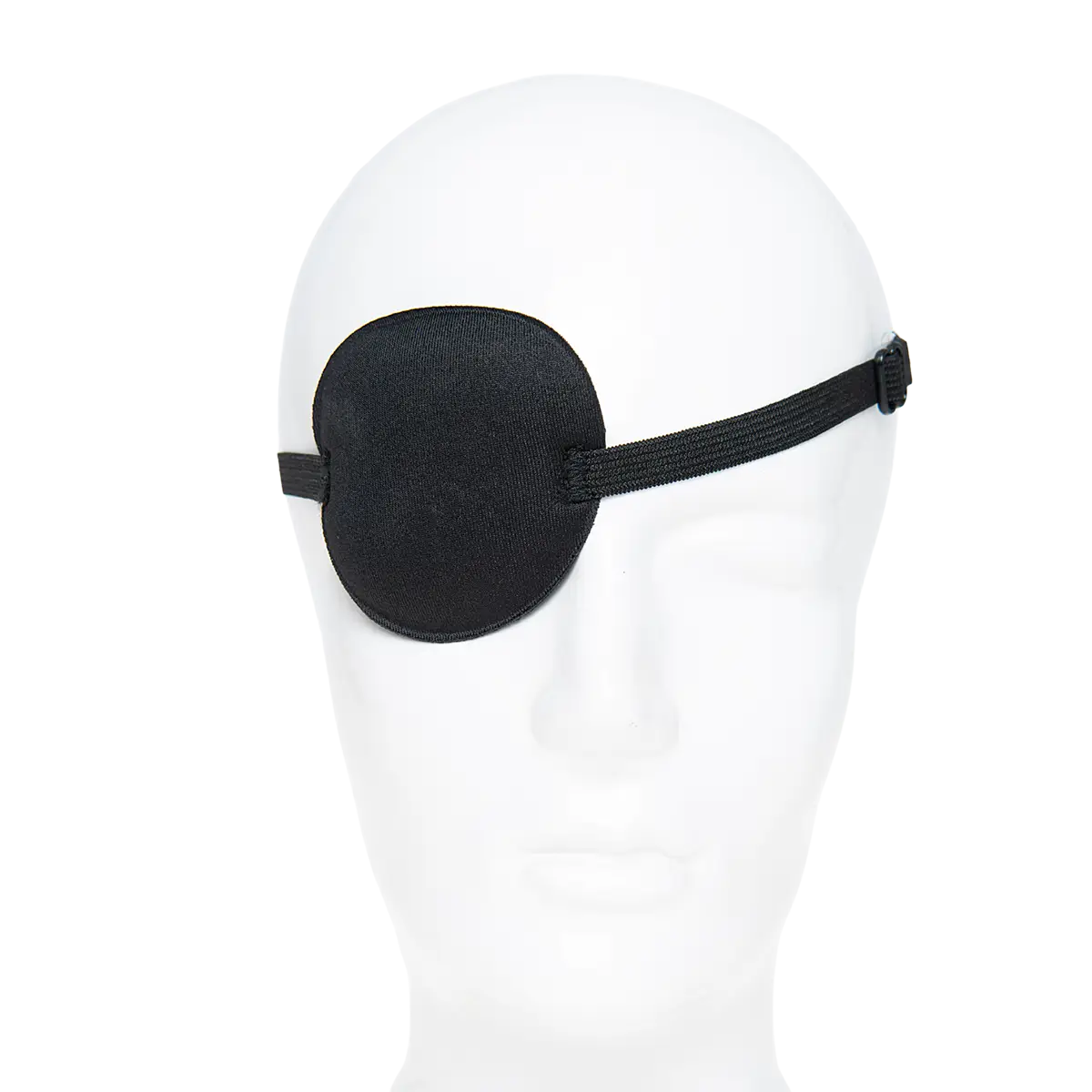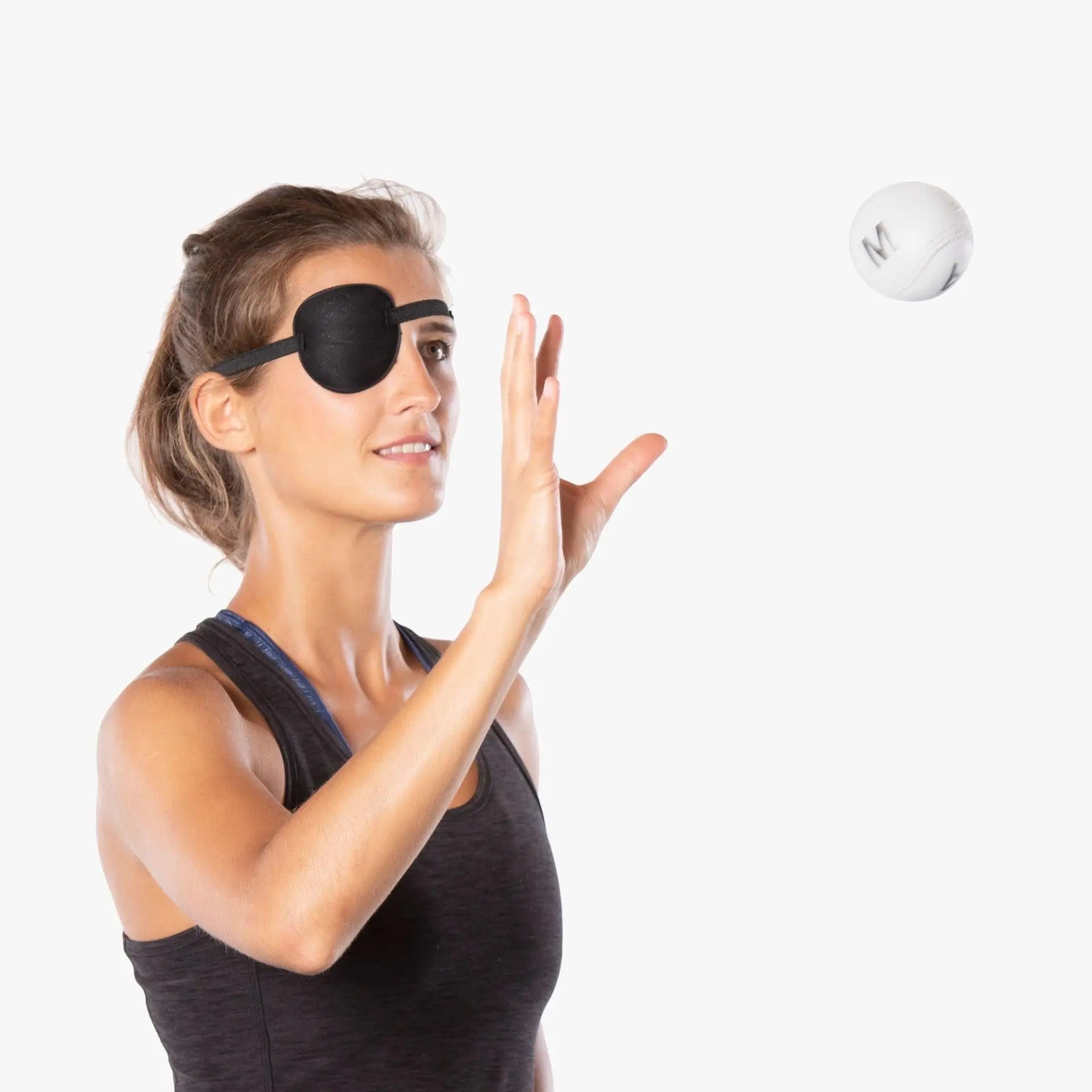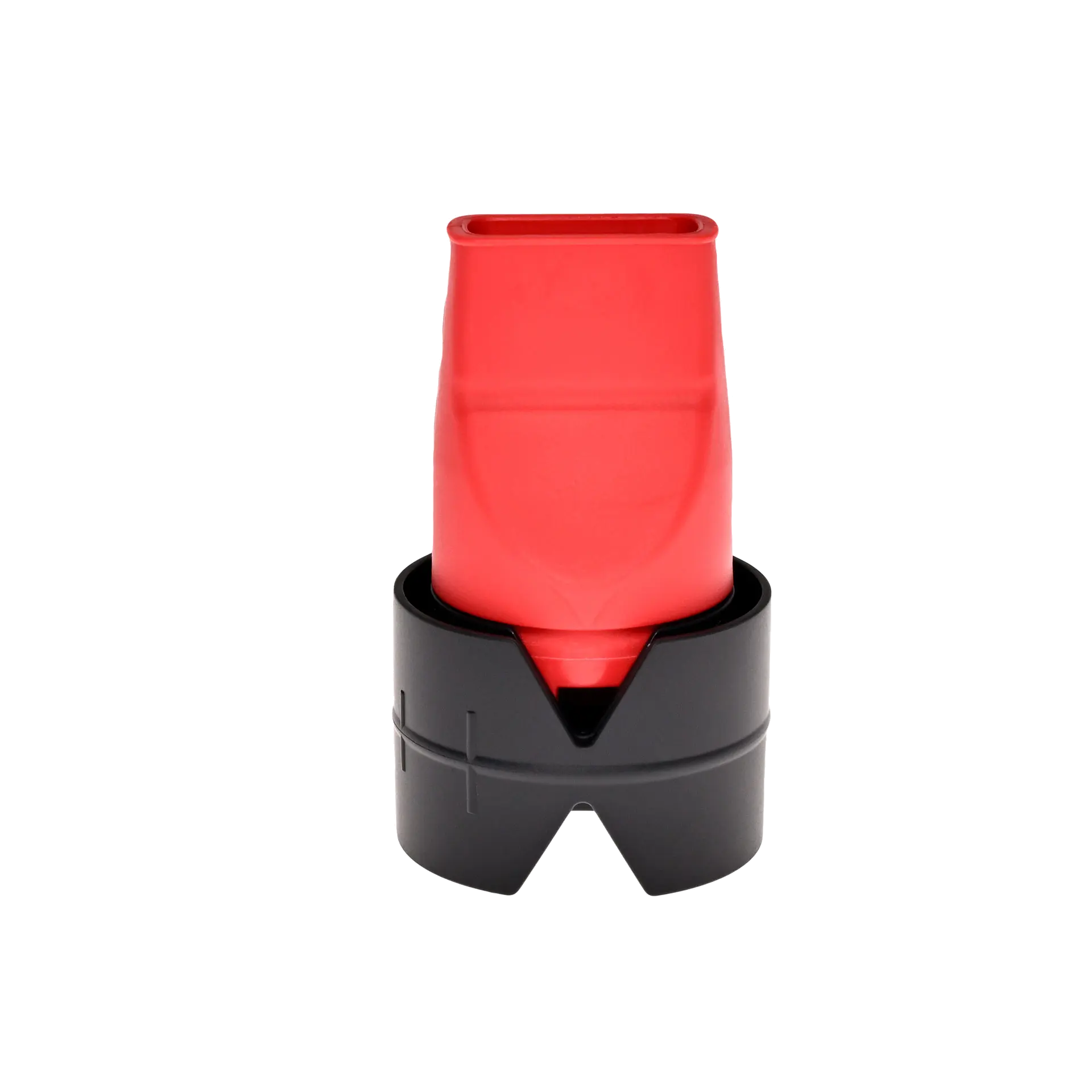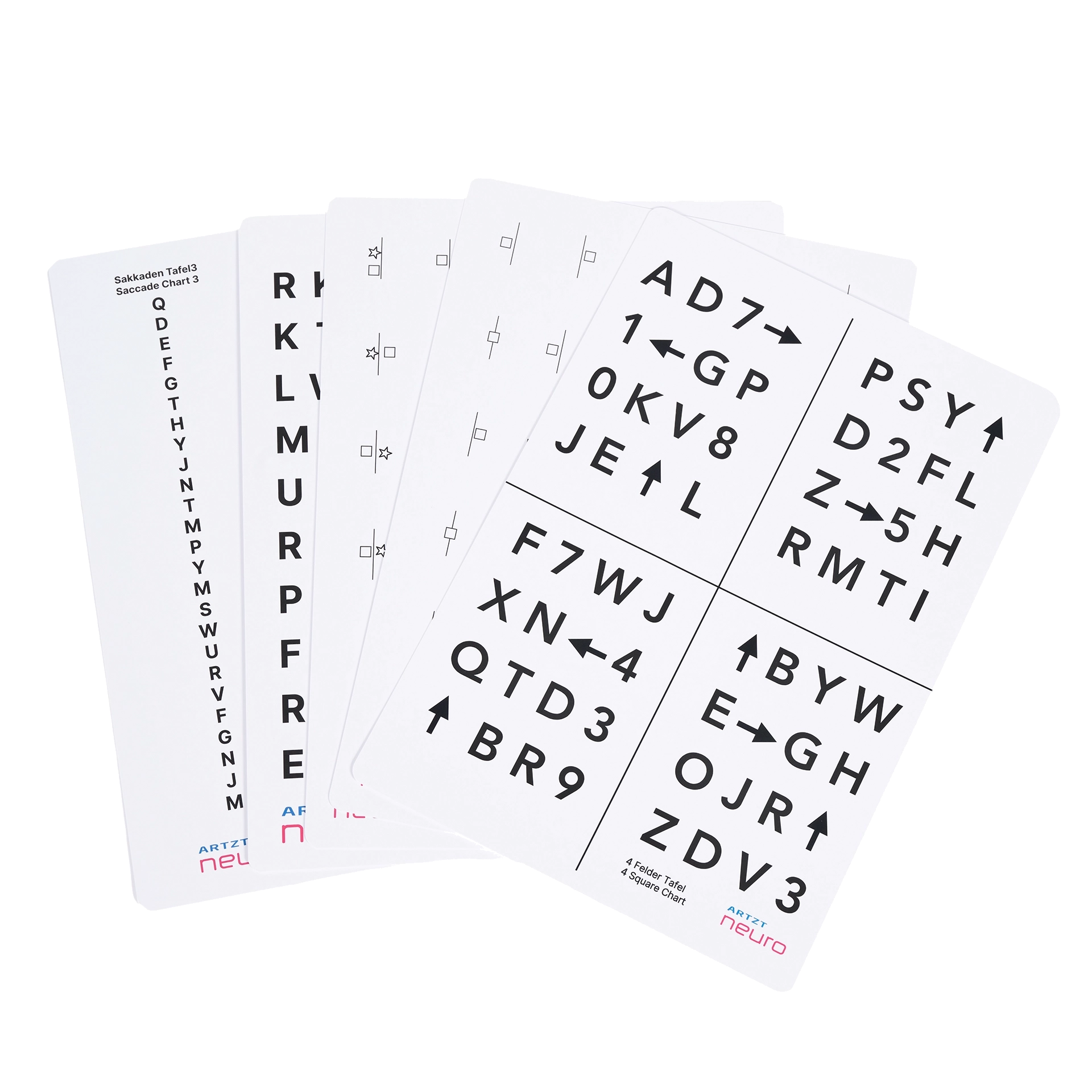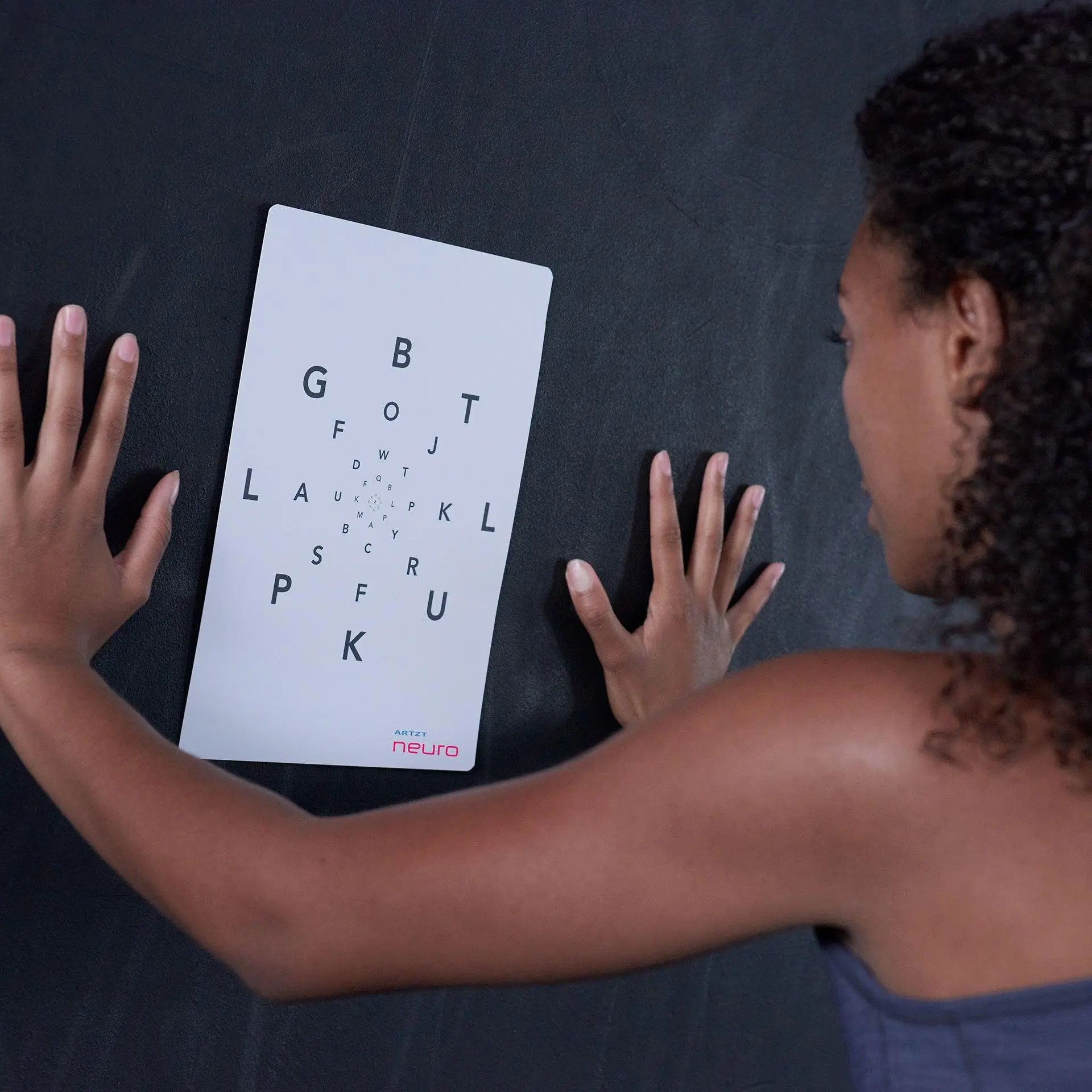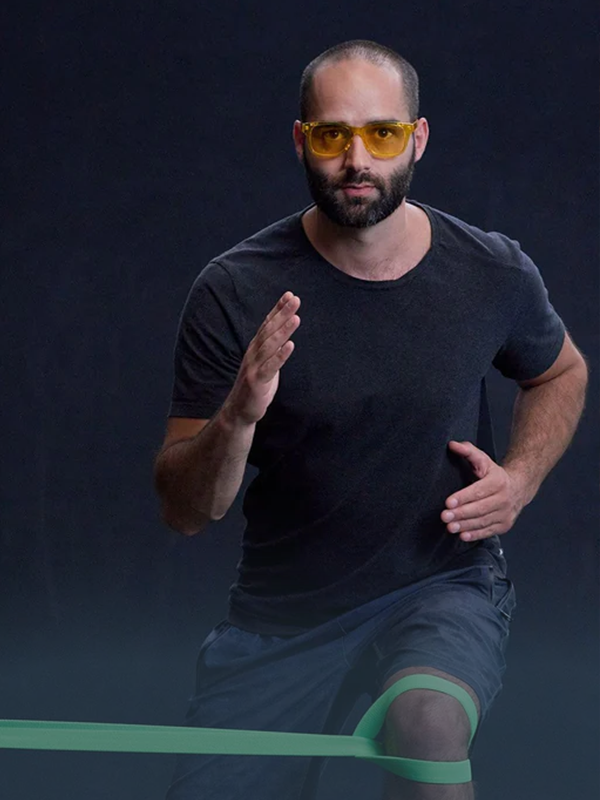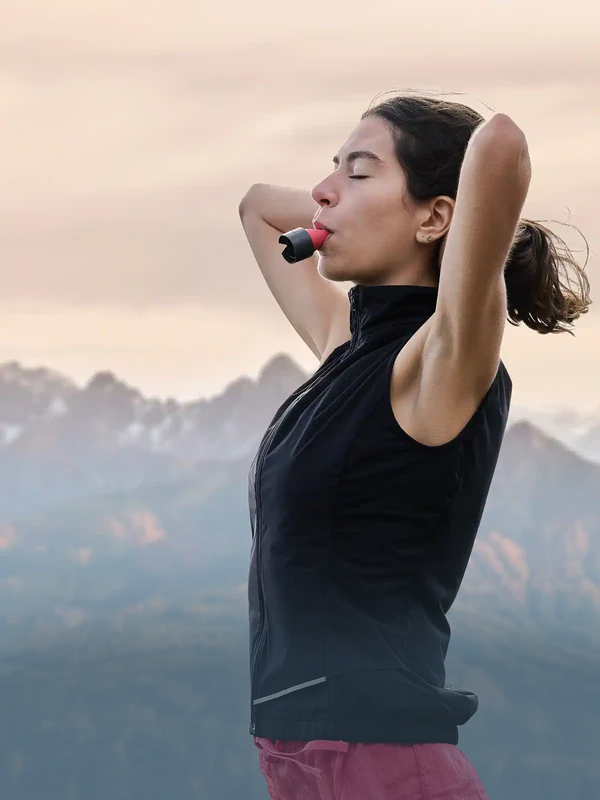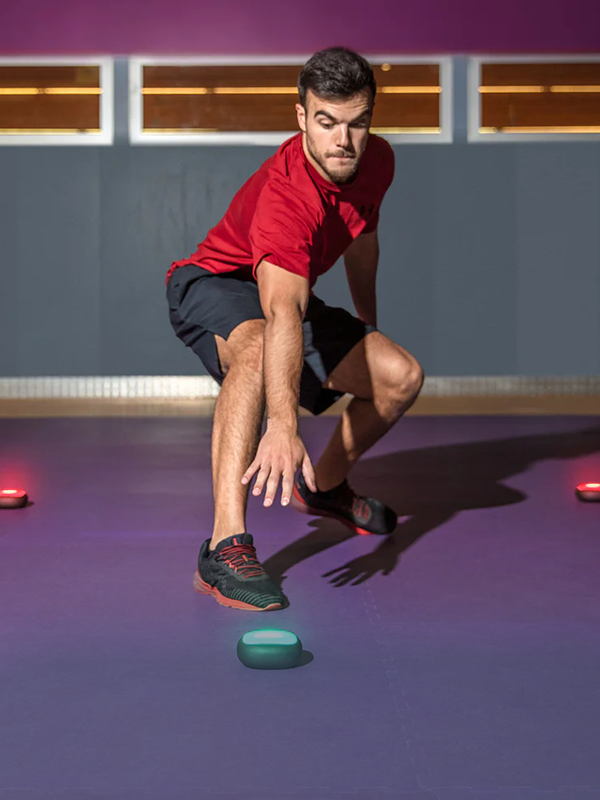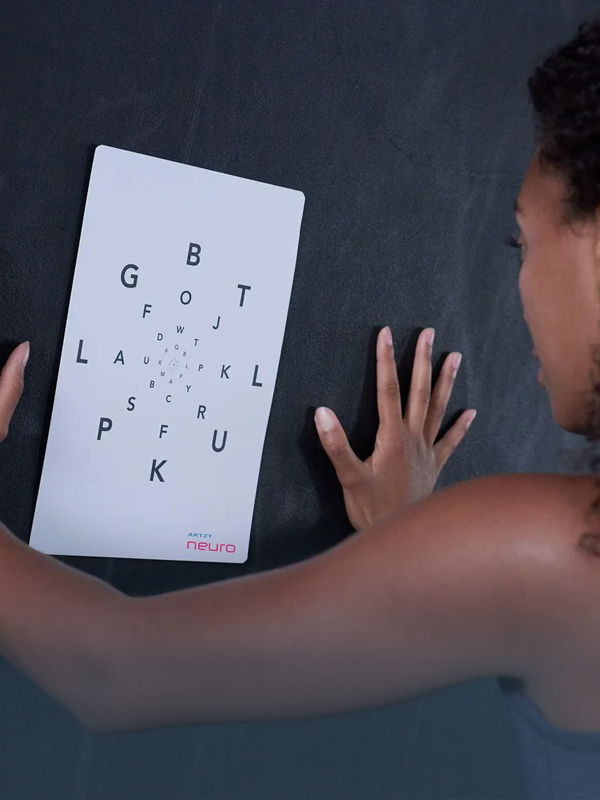Reading time: 15 minutes
What happens when two experts from different disciplines meet and discover that their methods not only complement each other, but actually reinforce each other? That's exactly what Berengar Buschmann and Yassin Jebrini have done. Their goal: to bring neuroathletics into physiotherapy practice.
In this article, we'll give you a clear, concise introduction to the theory and, most importantly, concrete practical exercises that you can immediately integrate into your daily therapy routine. Plus, a few helpful practical tips to help you get started.
Contents
- What is Physio meets Neuro?
- More than movement: What really happens in the nervous system
- Consider the whole body
- Neurocentric application in practice
- Hands-on Neuroathletics: 4 Applications for Your Practice
-
Interview with Berengar Buschmann and Yassin Jebrini
- Conclusion: Neuroathletics in physiotherapy practice: A forward-thinking approach
- Our authors and experts
What is Physio meets Neuro?
Physio meets Neuro is a project that connects two worlds: physiotherapy and neuroathletics. Together, experts Berengar Buschmann and Yassin Jebrini are researching the strengths and intersections of both methods and attempting to reconcile them. The intention of the campaign is to introduce therapists to the principles of neuroathletics and encourage them to integrate them into their daily work. The aim is to deepen the understanding of the interplay of nerve, muscle, and connective tissue systems and to develop new, holistic treatment approaches . Neurocentric methods can also be specifically combined with proven concepts such as Bobath or PNF, which are particularly useful for neurological deficits.
Neuroathletic trainer Yassin and physiotherapist Berengar have developed methods that effectively combine targeted techniques from neurocentric training and physiotherapy . A treatment concept that focuses specifically on coordination, movement control, and neural integration – with the goal of long-term improvement in functional movement patterns. This can help many people mentally and physically, both now and in the future.
More than movement: What really happens in the nervous system
At first glance, exercise appears simple: sensory organs receive a stimulus, the brain processes it, and sends a signal to the muscles. However, behind this simple formulation lie complex neurological processes and specific protective patterns that can be thrown off balance by injury or neuronal damage. Neurocentric training stimuli target the central nervous system directly and influence neuronal processing. They can be used during rehabilitation to influence these complex neurological processes and reduce disproportionately high protective patterns.
Consider the whole body
The vestibular system (VIIIth cranial nerve – vestibulocochlear nerve) is central to our spatial orientation and the upright posture against gravity. It is closely linked to the visual and proprioceptive systems. From a neurocentric perspective, this interplay can be used therapeutically – for example, to reduce pain in the hip flexors during deep squats.
A simple application: The patient slowly squats until the point of pain, focusing on a low-held target (e.g., the Vision Stick ). This is followed by a quick return to a parallel stance. This combined stimulus processes sensory input in brain areas such as the midbrain, pons, cerebellum, and thalamus, allowing the brain to better predict movements. This reduces protective mechanisms such as pain and expands the range of motion – often after just a few repetitions.
Movement begins in the head – and goes through the brain stem
From movement planning to execution, multiple structures are involved: the limbic system, the association cortex, the thalamus (part of the diencephalon), the cerebellum , and the brainstem with the medulla oblongata, pons, and midbrain work closely together. These networks modulate every movement—even in seemingly localized conditions such as hip problems .
But sometimes traditional training alone isn't enough to improve flexion. This is where another approach comes into play: the targeted activation of cranial nerves III (oculomotor nerve), IV (trochlear nerve), and VI (abducens nerve), which are responsible for eye movements.
Why is this useful? Binocular vision is the central function of the visual system and is closely linked to postural reflexes . Although these reflexes do not directly influence the hip, a targeted eye position, e.g., downward and inward, can promote brainstem activation via neural connections, thereby improving flexion ability (see Fig. 2 a–d).

Fig. 2 a – d: Control of binocular function: Eye tracking movement with the Vision Stick near the tip of the nose forward and downward to activate the midbrain and pons
Fine-tuning by the cerebellum and thalamus
The brain controls every movement—but it also limits it when protective mechanisms like pain are active. Therefore, not only muscular output is important, but also the processing of sensory input . The cerebellum and thalamus , in particular, play key roles here.
The cerebellum is functionally divided into three areas:
- Vestibulocerebellum & Spinocerebellum : control posture, trunk movement and muscle tone
- Pontocerebellum : coordinates targeted movements and speech motor skills
- Vestibulocerebellum : stabilizes the gaze motor function on one spot
The thalamus then decides whether a movement will be implemented as planned . The result is transmitted via the motor cortex (precentral gyrus) to the spinal cord – via pyramidal and extrapyramidal pathways, including the cranial nerve nuclei in the reticular formation of the brainstem. Only there is the movement impulse finally transmitted to the periphery – and becomes visible.
Neurocentric application in practice
Example: Control of binocular function
By targeted eye tracking movements with the Vision Stick – close to the tip of the nose and forwards and downwards – the midbrain and pons can be activated (Fig. 2 d).
Example: Pain reduction in hip flexion
Slow knee bending movements to the point of pain, combined with gaze focusing on the Vision Stick (held low), can improve processing in the central nervous system. The goal: less pain, more mobility (Fig. 3 a + b).

Fig. 3 a + b: Improvement of pain during hip flexion in the deep squat with the Vision Stick.
Sensory activation of peripheral nerves
Sensory stimulation of injured structures can also help, for example, by applying vibrations to the affected side with the ARK Z-Vibe . This allows the brain to be informed specifically and protective patterns to be changed.
Example integration into a therapy unit
The recommended exercise principle for neurocentric training is approximately 30 minutes per day . This can easily be broken down into smaller time segments and integrated into the course of therapy. An example implementation for integration into a therapy session or a separate training session during the course of therapy could be as follows:
Activation of movement-controlling systems before or during warm-up
Before the actual training session or therapy begins, it's worthwhile to specifically activate the systems that control our movement. This primarily includes joint mobilization to expand range of motion and prepare the central nervous system for subsequent stimuli.
Visual and vestibular training can be used as a complementary measure – bilaterally or unilaterally, depending on the findings. Especially in cases of known weaknesses in one of these systems, this can improve neural control and noticeably optimize movement control. This turns the warm-up into more than just a warm-up: it becomes a targeted neurological activation of the body.
Between sentence or series breaks
Between sets, you can incorporate one or two targeted exercises that activate the affected joint sensorially or target the visual system . Important: The exercises should be simple, quick to perform, and doable without significant cognitive effort. This maintains focus during the actual training while the nervous system participates effectively.
Cool Down
At the end of the session, the focus should be on joint and nerve mobilization of the previously stressed areas . This supports regeneration and ensures that the newly gained range of motion is maintained long-term. Additionally, the following exercises can be incorporated:
- Mobilization of the spine (cervical and thoracic spine)
- Mobilization of the feet
- Eye relaxation (e.g. through palming or gentle eye massage)
- Breathing techniques to relax the nervous system
The original article Neurocentric Therapy can be found at: sportaerztezeitung.com
Hands-on Neuroathletics: 4 Applications for Your Practice
In four exciting sessions, Yassin and Berengar will show you how neuroathletic training and physical therapy can be effectively applied in practice. Various complaints and conditions are examined and treated with the support of the best neuroathletic tools. Targeted exercises can also be used for reactivation in cases of partial paralysis.
Session 1: Neuroathletic training for back pain
Do you often experience pain when sitting or tying your shoes? Can you get out of the car, or do you have to strain into a protective posture? Can you sleep through the night, or do you have trouble staying in bed for long periods?
Back pain remains one of the most common ailments in the world. Approximately two-thirds of all Germans suffer from it regularly. This is hardly surprising: we sit too much and move too little. Our bodies aren't designed for this. However, regular exercise can help with back pain.
>> Reading tip: 6 neuroathletic exercises for back pain
Yassin and Berengar show you how to treat everyday back pain:
Session 2: Neuroathletic training for the vagus nerve
Do you have trouble sleeping? Do you suffer from chronic pain or digestive problems? Do you get out of breath easily? The cause of these problems can often be found in the autonomic nervous system and the vagus nerve.
The vagus nerve is the tenth and longest nerve of the cranial nervous system, and it bears its name for a reason; "vagus" means "wandering" in Latin. Indeed, this nerve runs through large parts of our body and connects the brain with many organs, including the heart, lungs, and intestines.
A well-functioning vagus nerve helps us to cope with stress better by ensuring that our body can transition from a state of tension to relaxation more quickly.
>> Reading tip: Activating the vagus nerve: 3 simple exercises for more relaxation and serenity
In this video, Berengar and Yassin show you how the vagus nerve influences your well-being and how you can actively stimulate it:
Session 3: Neuroathletic training for neck pain
Do you often experience neck pain? Does your neck ache when you check your shoulder while driving? Can you turn your head properly to the side?
The causes of neck pain can be varied, and often a combination of factors is at play. One of the main causes is muscular tension resulting from inadequate or unfavorable posture—whether from sitting in front of a computer for hours or from incorrect positioning while sleeping. The increasing use of smartphones also often leads to what is known as "text neck" strain, in which the neck remains in a downward tilt for extended periods.
In this video, Berengar and Yassin show you what you can do professionally to treat neck pain:
Session 4: Neuroathletic training for shoulder pain
Does your shoulder hurt when you try to reach the top shelf? Do you sometimes experience numbness in your arm that extends down to your fingers? Are you afraid to lift or push heavy boxes because the shoulder pain will return?
Shoulder pain manifests as discomfort and inconvenience in the area between the neck and upper arm. It can be acute or chronic, vary in intensity, and worsen with different movements or postures. The shoulder itself is the most mobile joint in the body and is surrounded by a complex structure of muscles, tendons, and ligaments, making it particularly susceptible to injury or wear and tear.
In this video, Berengar and Yassin show you how to treat shoulder impingement with neuroathletic exercises:
Physio meets Neuro - Interview with Berengar Buschmann and Yassin Jebrini
In an interview, physiotherapist Berengar Buschmann and neuroathletic trainer Yassin Jebrini talk about the opportunities this collaboration offers.
DOCTOR neuro: Yassin, do you think that traditional physiotherapy with its established methods and techniques may be outdated?
Yassin Jebrini: No, absolutely not. The techniques used have been proven to provide added value for some patients. However, it certainly makes sense to broaden the perspective to include pain and other rehabilitation measures, because their causes extend beyond primarily musculoskeletal-based therapy.
DOCTOR neuro: Berengar, is neuroathletics perhaps just a fashionable trend?
Berengar Buschmann: It's definitely a trend. I first encountered real trends during the height of the fascia trend. For me, however, it's not the trend itself that's important, but rather the strength of the content, which also helps me advance professionally. One is welcome to be skeptical about any topic that generates widespread interest.
DOCTOR neuro: How would you measure the success of your treatment?
Yassin: Through reflexive assessments for the therapist and sensory and motor assessments for the client, we can immediately assess whether each intervention is generating added value. Only in this way can we guarantee that all selected interventions are truly helpful for the patient.
Berengar: In my opinion, there are still too few objective tests in the world of neuroathletics. Some things are primarily subjective. For example, in training sessions with Yassin, we used force measuring devices that objectively measure forces in Nm. However, success also comes from subjectivity, for example, when pain is immediately reduced after techniques.
DOCTOR neuro: What type of injuries or illnesses do you treat most frequently?
Yassin: It varies a lot. Since I'm not a physical therapist, patients usually only come to me after their rehabilitation is complete and they haven't achieved the desired results. We often see clients with pain problems or mobility restrictions that doctors and physical therapists haven't been able to address.
Berengar: In my case, it's all sorts of sports injuries and overuse syndromes. Everything from the world of orthopedics and surgery.
DOCTOR neuro : How do physiotherapy and neuroathletics differ in terms of the rehabilitation process?
Berengar: I don't think they're different; they complement each other. Fascia rolls or tapes, for example, are used just as often in physiotherapy as they are in neuroathletics. It depends on your perspective: Do I use them to target the nervous system or the connective tissue system more? I think they target both. However, you can focus on different applications depending on your specific goals.
Yassin: In neuroathletics, in addition to musculoskeletal work, we also focus on restoring movement control and guidance through the central nervous system. If, after an injury or surgery, a structure is not subjected to its usual load for a certain period of time, this not only affects the resilience of the bones, muscles, tendons, fascia, and ligaments, but also the neural areas that innervate and control these structures. We must always keep both aspects in mind when conducting rehabilitation measures.
ARTZT neuro: How do you see the future for physiotherapy and neuroathletics with regard to new findings and developments in rehabilitation?
Berengar: That's a difficult answer. The future of physiotherapy is a complex question in itself. Regarding the match between these two worlds, I believe that many aspects will converge and become increasingly convergent. Neuroathletics will certainly become a fundamentally integrated application.
Yassin: Our colleague Felix Danners, a physiotherapist, recently said that the term neuroathletics doesn't really do justice to the subject, as it involves more than the integration of functional neurology into athletic training or therapy.
When people hear the word neuroathletics, many expect a new set of techniques and tools. However, the neurocentric perspective brings with it not only a broad range of tools, but above all a new perspective. We tend to apply a familiar range of techniques to a specific problem, which sometimes leads to success, but sometimes not. The neurocentric approach provides a clear structure for when and what can be used for a particular problem. I would like to recommend the podcast "Between Eye Patch and Manual Therapy," Episode 10 - Felix was on a training course.
DOCTOR neuro: Yassin, is neuroathletics able to cover the broad scope of traditional physiotherapy?
Yassin: The question implies substituting physiotherapy with neuroathletic training, which is absolutely not productive. I like to use the metaphor of functional neurology as an umbrella under which all therapy and training techniques fit, explaining when and in which context which technique can be used profitably, and in which dosage.
As Berengar has already noted, we're all working on the same system; we simply have different approaches through different techniques and tools. Some are more targeted and in tune with the needs of the patient's nervous system, others are more random and habit-based. The neurocentric training approach is an excellent complement to physiotherapy and enables faster and more targeted therapeutic success. The musculoskeletal perspective is complemented by that of neural movement control and movement regulation.
DOCTOR neuro: Berengar, is there a tendency in physiotherapy to treat symptoms instead of a holistic analysis of the causes?
Berengar: Yes, absolutely. But the current, serious reason for this isn't necessarily unqualified therapists, but rather the working conditions with extremely limited time intervals per patient.
DOCTOR neuro: Are there certain injuries for which you would recommend combining the other treatment modality?
Berengar: Based on previous experience, we can take successful joint steps in cases of herniated discs, cruciate ligament tears and, for example, shoulder impingements.
Yassin: Definitely. Especially when it comes to manual therapy, physiotherapists are generally much better trained and more experienced than trainers, and they also operate on safer legal ground.
DOCTOR neuro: What would be necessary for patients to benefit from an integrative approach that combines the best elements of both treatment modalities?
Berengar: To hope for visionary, highly motivated therapists willing to continue their training and to increase the chances, a reform of the German healthcare system is needed. Ultimately, this doesn't mean that the physiotherapist has to replace the neuroathletic trainer; rather, they can test the extent to which the approaches are relevant to the patient and then pass them on to professional colleagues. For this, however, I, as a physiotherapist, also have to understand this systemic thinking.
Yassin: I believe functional neurology should be integrated into therapist training to enable a more comprehensive treatment. This applies to sports scientists and coaches alike. There is a gap that needs to be closed in the field of training and therapy. Everyone would benefit from this. The fact is: We are all constantly working with the nervous system. Therefore, we should do it responsibly and not randomly, based solely on our own habits and conveniences.
Conclusion: Neuroathletics in physiotherapy practice: A forward-thinking approach
Neuroathletics is more than a new therapeutic approach – it's an invitation to question familiar perspectives and expand musculoskeletal therapy through targeted stimuli of the nervous system. Regardless of the type of pain, combining visual, vestibular, and proprioceptive impulses with traditional physiotherapy creates new possibilities – directly at the spinal cord, via the oblongata, reticular formation, and more.
With “Physio meets Neuro,” Berengar Buschmann and Yassin Jebrini show how coordination, pain processing, and movement control can be specifically improved – through an understanding of what begins in the mind and becomes noticeable in the body.
Our authors and experts
Physio meets Neuro is run by experienced therapists, trainers, and coaches who have not only studied neuroathletics theoretically but also apply it in practice every day. Here, we introduce ourselves to the people who contributed their experiences, ideas, and approaches to this article.
Responsible for the article Neurocentric Therapy :
Björn Reindl
Owner and Managing Director of the interdisciplinary health center R2comSport in Neu Isenburg, Chiropractor (MoC Swe.), Osteopath and lecturer in the field of DOSB sports physiotherapy
The naturopath and physiotherapist (b. Nl.) served as the lead physiotherapist for Eintracht Frankfurt Fußball AG for seven years. Prior to that, he treated both FSV Frankfurt and Kickers Offenbach at their respective clubs.
Kevin Nickoll
Sports scientist (MA Sports Science) at R2comSport in Neu-Isenburg
His focus is on medical rehabilitation and athletic training, functional range conditioning, and neurocentric training. He is primarily responsible for supervising all competitive athletes in various sports at the (inter)national level and specializes primarily in lower extremity training.
Responsible for the concept Physio meets Neuro :
Berengar Buschmann
DOSB sports physiotherapist, physiotherapist B.Sc., Sect. alternative practitioner & trainer, owner of AREHA Idstein
Berengar Buschmann is a passionate sports physiotherapist and, in his "second career," lives this vocation dynamically and optimistically every day. He has been a lecturer for 10 years and has worked with elite/professional athletes (top 100 ATP tennis players and Bundesliga and Champions League footballers) for 6 years. In his first professional career, he was a professional footballer, became a certified sports invalid, and returned to life stronger than ever. These experiences help him today to help his clients and patients. Since then, Buschmann, as a "health visionary," has been tinkering with and developing the "most perfect concept" for maintaining health with his AREHA team.
Yassin Jebrini
Sports scientist, neuroathletic trainer & instructor
Yassin Jebrini is one of the leading coaches and trainers in the field of neuroathletics. He draws on his experience as a Z-Health Master Practitioner, former competitive athlete (soccer and rowing), master's graduate from the German Sport University Cologne, and long-time trainer to train ambitious coaches, therapists, and athletes in neurocentric training and therapy approaches. His six-month Neuroathletics Mentorship is one of the most professional and in-depth training programs in the German-speaking world.

